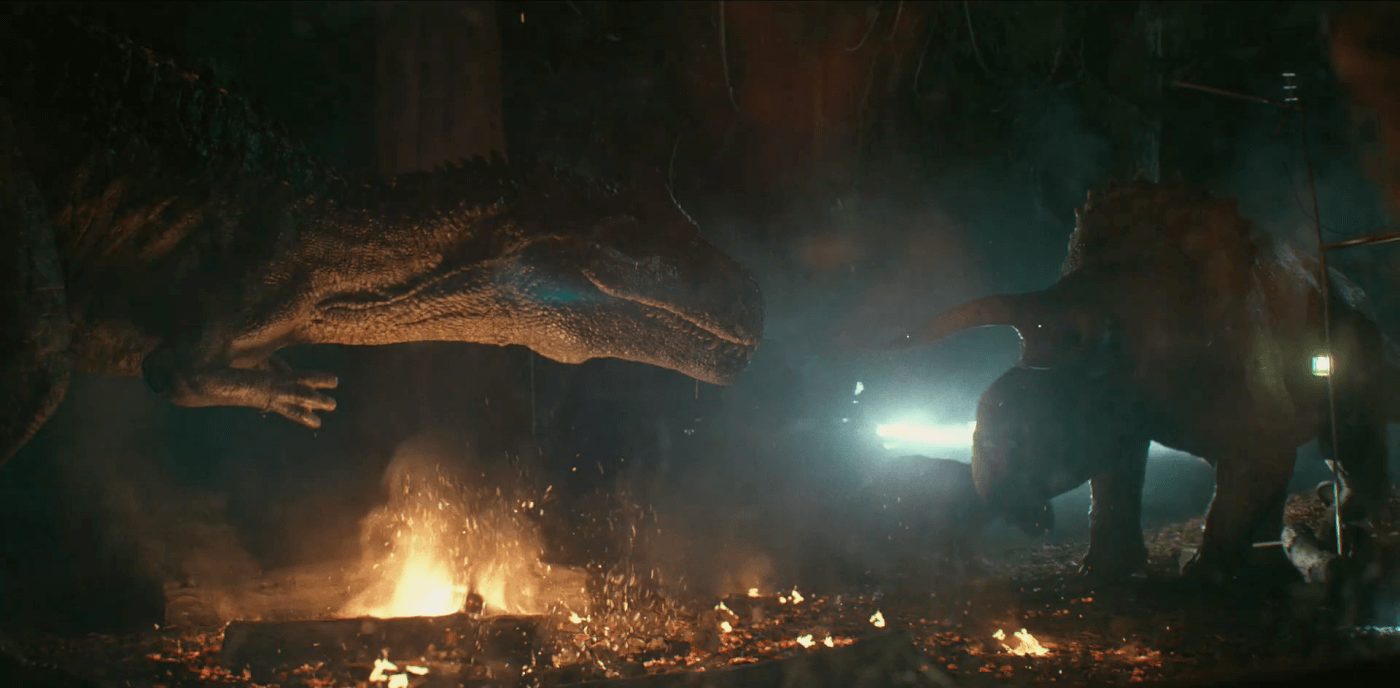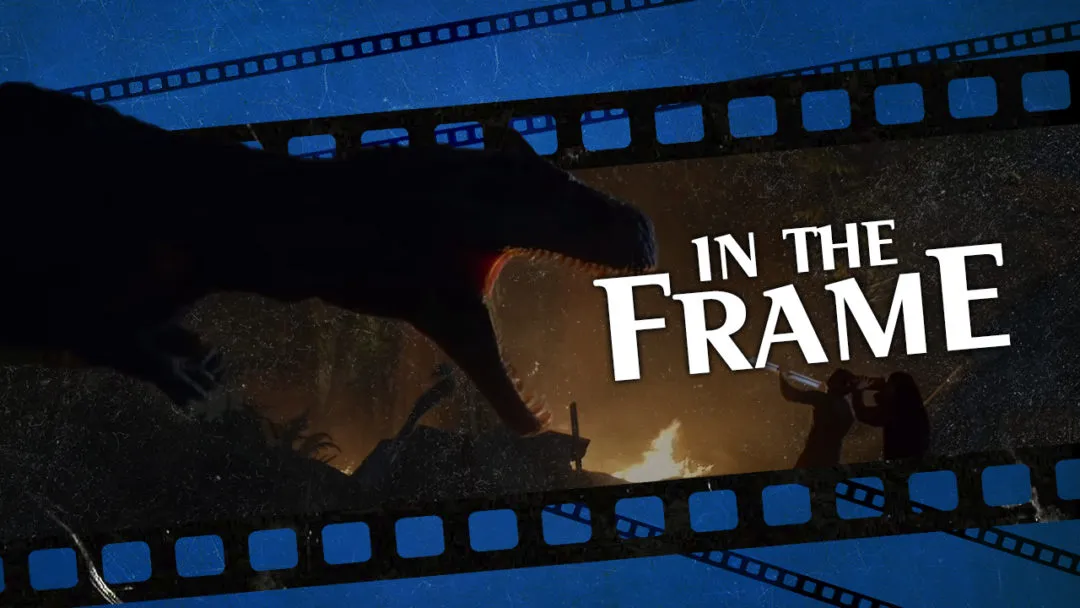Battle at Big Rock wins big by going small. The eight-minute Jurassic Park short arrived online with little fanfare, but it spread quickly. It felt like a genuine surprise, which is particularly remarkable in an era where trailers get their own pre-release trailers and the smallest casting announcements are drip-fed to an eager media.
Jurassic Park is a $4.9 billion franchise for Universal Studios, so this relatively low-key marketing is refreshing. Despite the guerrilla approach to its release, the short film itself is top-grade. Battle at Big Rock is not a throwaway special feature to be tucked away on some retailer-exclusive bonus disc. It has top-of-the-line special effects, was co-written and directed by Colin Trevorrow (Jurassic World), and stars Andre Holland (Moonlight) and Natalie Martinez (Death Race) as parents at a campsite that becomes ground zero for a prehistoric feeding frenzy.
The short wastes little time in getting to the dinosaur-fueled action, and its tight runtime means that it doesn’t overextend the simple but effective hook of letting these monsters menace a family in a camper.
Trevorrow also gets to showcase some of his narrative and directorial chops. Just over half of the short is given over to the family watching the carnage through the window as terrified observers. Battle at Big Rock remembers that Jurassic Park is fundamentally a franchise about awe and wonder.
In the original Jurassic Park, entrepreneur John Hammond (Richard Attenborough) traced his dream’s origin to the flea circus that he owned as a boy. Outside the narrative, director Steven Spielberg seemed to conceive Jurassic Park as a metaphor for the majesty of the movies. Battle at Big Rock captures that sense of spectacle, repeatedly positioning the characters within literal frames.
Battle at Big Rock feels like a necessary attempt by Trevorrow to redeem his reputation. Jurassic World was a massive success for all involved, crossing the billion dollar mark at the global box office and debuting to solid (if unremarkable) reviews. However, the intervening years have not been kind to the director, who followed Jurassic World with an indie passion project, The Book of Henry. It was a critical and commercial failure. Shortly after, Trevorrow was summarily dismissed from his next gig, Star Wars: Episode IX – The Rise of Skywalker. While Trevorrow himself claims not to know if it was a factor, there have been rumors that the failure of The Book of Henry cost him the job.
Battle at Big Rock may also be seen as an effort to win back the audience for the larger Jurassic Park franchise. This might seem counterintuitive given the series’s financial success, but each of the four sequels exists in the shadow of the original. Spielberg’s Jurassic Park was a formative cultural moment for an entire generation of movie-goers, and nothing that followed has lived up to it.
A large part of the problem is that the sequels tend to feel repetitive. In each of the four films that followed, a bunch of characters go to an island, encounter rampaging dinosaurs, and find themselves fleeing for their lives through a series of set pieces that build inexorably towards a climax involving a Tyrannosaurus rex (or T. rex-like creature). It is very formulaic.

One of the redeeming aspects of Jurassic World: Fallen Kingdom was a willingness to shake up the template a bit. The first half of the film was given over to the classic “dinosaurs on an island” pattern, but even that was filtered through the relatively fresh lens of a natural disaster movie. The second half leaned full-tilt into genre madness, unleashing the dinosaurs within a gothic mansion. “Nosferatu… but with dinosaurs” is a gonzo elevator pitch, but at least it is novel.
The ending of Fallen Kingdom makes absolutely no sense, even by the standards of a world where dinosaurs can be cloned from amber combined with frog DNA. The movie ends on a gigantic cliffhanger, unleashing the dinosaurs upon the larger world by releasing them into the wild. The film glosses over a lot of important details like sustainable population sizes and environmental suitability. Fallen Kingdom doesn’t have a lot of time for internal logic.
However, it kind of works. Releasing the dinosaurs is at least a new approach to the basic premise, building off potential that had only previously been suggested by the San Diego sequence at the climax of The Lost World: Jurassic Park. At the very least, it assures that the follow-up won’t be yet another story about a bunch of people who make the stupid decision to visit a dinosaur-infested island.
This is the most interesting and exciting element of Battle at Big Rock. As the credits roll, the audience is treated to found footage inserts teasing glimpses of a world coming to terms with the dinosaurs that are roaming free, including a little girl chased by procompsognathuses, a car crash caused by a stegosaurus, a great white shark eaten by a mosasaurus, and a wedding ruined by a pterodactyl. Battle at Big Rock argues that the Jurassic Park franchise can feel new again.






Published: Sep 20, 2019 05:28 pm